Abstract
This study focuses on the formulation and evaluation of a mosquito repellent lotion using natural oils known for their repellent properties. The primary ingredients include lemongrass oil, tea tree oil, and coconut oil, each known for their active components that deter mosquitoes.The lotion was formulated using a blend of essential oils extracted from C. citratus, along with suitable emollients and stabilizers. The formulation process was optimized to achieve a balance between efficacy and skin compatibility.Two formulations, F1 and F2, were developed with varying concentrations of these oils along with other excipients such as cetyl alcohol, glyceryl monostearate, sodium benzoate, and distilled water. The preparation involved separate heating and mixing of oil and water phases, followed by their combination to form a consistent lotion.The lotions were evaluated based on their viscosity, spreadability, pH, and potential for skin irritation. Viscosity was measured using a Brookfield viscometer, showing F1 with 35000 cP and F2 with 60800 cP. Spreadability tests revealed that F2 had a higher spreadability (7.2 g.cm/s) compared to F1 (6.4 g.cm/s). pH measurements indicated that F1 was near neutral (7.0), while F2 was slightly acidic (6.1). Both formulations were found to be non-irritant to the skin.The comprehensive evaluation suggests that formulation F2, with higher viscosity and better spreadability, is the more favorable option for a mosquito repellent lotion. The study highlights the potential of natural oils in creating effective and skin-friendly mosquito repellent products. The lotion was formulated using a blend of essential oils extracted from C. citratus, along with suitable emollients and stabilizers. The formulation process was optimized to achieve a balance between efficacy and skin compatibility. Overall, this study presents a promising approach for developing herbal mosquito repellent lotions, leveraging the natural repellent properties of Cymbopogon citratus, which could contribute to mitigating the spread of mosquito-borne diseases while offering a safer alternative to conventional repellents.
Keywords
Mosquito repellent, Cymbopogon citratus,Repellent activity, Mosquito-borne diseases,Spreadability, lemongrass oil, skin-friendly.
Introduction
Herbal mosquito repellents are natural products designed to repel mosquitoes and other biting insects. They are made from plant-based ingredients, including essential oils, herbs, and other botanical extracts[1].Scientists have been studying mosquitoes for a long time to find ways to protect humans from their bites.In the United States, mosquito bites are mostly annoying, but globally, mosquitoes transmit diseases to over 700 million people each year.Shockingly, mosquitoes are responsible for the deaths of 1 out of every 17 people currently alive.Malaria is a disease caused by a tiny parasite carried by mosquitoes.According to the World Health Organization, malaria leads to up to 3 million deaths annually[2].So, preventing mosquito bites is crucial to reducing malaria cases.Some other mosquito borne diseases are yellow fever, dengue hemorrhagic fever, and encephalitis.Additionally, mosquitoes transmit a nematode that causes Bancroftian filariasis.The synthetic and commercial mosquito repellents have a chemical called as DEET(N,N-diethyl-m-methylbenzamide) which may cause skin irritation to certain extent[3].. DEET may also have role in causing eye irritation,rashes and blisters, but in rare cases. Its use is also prevented due its interacting characters with plastics, means it may also act as a plasticizer which leads to degradation of formulation.DEET can also irritate the mucous membranes[4]. Synthetic materials are used in Pakistan now a days.Because of the DEET, they show harmful effects to people of Pakistan[5]. A good alternative to DEET is Citronella essential oils which are basically obtained from Cymbopogon citratus. Citronella is found to be good mosquito repellent of herbal origin[6]. Other plants showing mosquito repellent activities include Lavender, Marigold, Catnip, Basil and Rosemary.But Cymbopogon citratus is known for its prominent mosquito repellent action[7].
HISTORY OF MOSQUITO REPELLENTS
The first recorded repellents were mentioned by Herodotus around 400 B.C. , and throughout history, people have tried many different methods to repel mosquitoes, including,Ancient Egyptians and Romans[8].The real breakthrough in repellents came in 1946 when Samuel Gertler of the US Department of Agriculture invented DEET, a synthetic repellent that could be used in the form of a cream, lotion, or powder. DEET was originally developed for use by the military in areas with insect infestations, but it was registered for use by the general public in 1957[9].
LEMONGRASS(Cymbopogon citratus )
Cymbopogon citratus is an aromatic plant belonging to family Poaceae.Due to its aromatic characteristics, it is used in cosmetics and mosquito repellents[10]. Cymbopogon citratus is natively found in Asia, particularly India and Sri Lanka, it is widely cultivated in many countries due to its versatile uses in culinary, medicinal, and industrial applications[11].Lemongrass is characterized by its tall, slender, and rigid stems, which can grow up to 1.5 meters in height. The plant features long, linear leaves that are green to bluish-green and emit a strong lemony fragrance when crushed, owing to the presence of essential oils, primarily citral[12].lemongrass has been used in herbal medicine because it is believed to have health benefits. It is thought to have antibacterial, antifungal, and anti-inflammatory properties. People often use it to help with digestive problems, fevers, and respiratory issues[13,14,15].Lemongrass grows best in tropical and subtropical climates, needing well-drained soil and plenty of sunlight. It can be grown from seeds or by dividing existing plants. To keep it healthy, it should be watered regularly and fertilized occasionally. Harvesting lemongrass involves cutting the stalks close to the ground, and this can be done several times a year[16]. Lemongrass(Cymbopogon citratus)is commonly have two species as "Cymbopogon flexuosus” and Cymbopogon citratus[17].Lemongrass, scientifically named Cymbopogon citratus, is packed with natural compounds called phytochemicals. These are substances found in plants that are really good for your health. Lemongrass is found to have various phytochemicals or secondary metabolites.The major phytochemicals or secondary metabolites found in lemongrass(Cymbopogon citratus) are Phytosteroids which are similar to cholesterol,Anthocyanins which are also called as”Anthocyans”,Aminoacids,Organic acids,Fattyacids,Phenolic compounds and certain Volatile compounds. The essential oil extracted from lemongrass is rich in Citral,Geraniol,Limonene,Citronellal,Myrcene and Linalool[18].Citral behaves as mosquito repellent and also as antimicrobial[19].Limonene is another important phytochemical found in lemongrass, contributing to its citrus aroma.It has been studied for its potential anti-inflammatory and anticancer properties[20]. The lemongrass is also having flavonoids which are known for their anti-oxidants and anti-inflammatory actions[21].Lemongrass contains various terpenoids, including geraniol and linalool, which contribute to its aroma and flavor.Terpenoids have been studied for their potential antimicrobial, anti-inflammatory, and anticancer activities[22]. Lemongrass is having tannins.Tannins are polyphenolic compounds found in lemongrass that have astringent properties.They may contribute to the medicinal properties of lemongrass, including its use in traditional medicine for treating digestive issues and infections[23].Lemongrass is found to have terpenes like geraniol which is having antioxidant, antimicrobial, and anti-inflammatory properties[24]. Lemongrass is also rich in various vitamins like vitamin A, vitamin C, vitamin D and vitamin B12. It is also having minerals like magnesium and calcium[25].
AIM AND OBJECTIVE
Aim:
The aim of the study is to formulate and evaluate a herbal mosquito repellent lotion utilizing Lemongrass as a key ingredient.
OBJECTIVES:
- Ingredients collection and procurement such as coconut oil, olive oil, cetyl alcohol, Petrolleum jelly, Glyceryl monostearate (GMS), Sodium Benzoate,Distilled water.
- Selection of mosquito repellents including lemongrass oil and tea tree oil.
- Formulation of mosquito repellent lotion using ingredients.
- Evaluation of the mosquito repellent lotion using different techniques including viscosity measurement, spreadability measurement , PH measurement and skin irritation test.
MATERIALS AND METHOD
MATERIALS
Lemongrass oil, Tea tree oil, Coconut oil, Olive oil, Cetyl alcohol, Petrolleum jelly, Glyceryl monostearate (GMS), Sodium Benzoate,Distilled water. All these materials were bought from local market. The role and action of main ingrediants are described below:
Lemongrass oil:
It is mainly obtained from the leaf of the plant lemongrass(Cymbopogon citratus) .It is having citral known for its mosquito repellent action. Citral is also responsible for aromatic and anti microbial properties of the lemongrass oil.
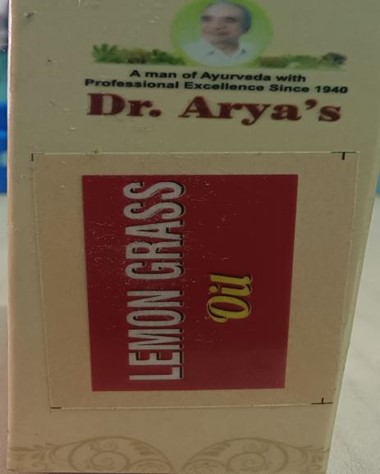
Fig.1 Lemongrass oil
Tea tree oil:
Tea tree oil is obtained from Tea tree( Melaleuca alternifolia) belonging to family Myrtaceae. It is having Terpinen-4-ol which behaves as mosquito repellent beasides its aroma nature.
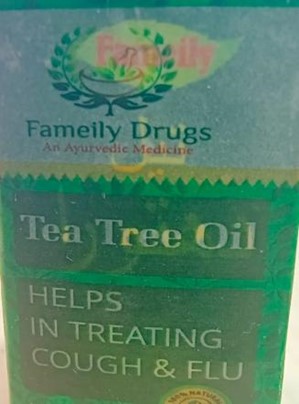
Fig No 2 Tea Tree Oil
Coconut oil:
Coconut oil is obtained from the coconut palm tree(Cocos nucifera). It is having lauric acid which behaves as a good mosquito repellent[29].
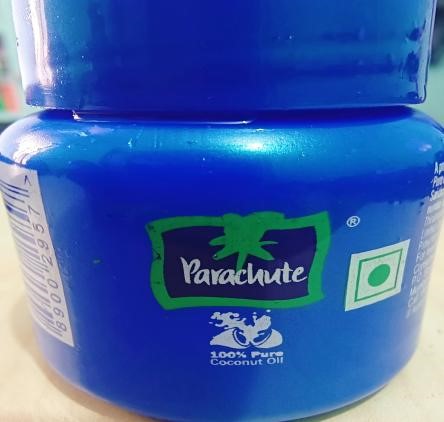
Fig 3. coconut oil
Table no.1 Ingredients and concentrations
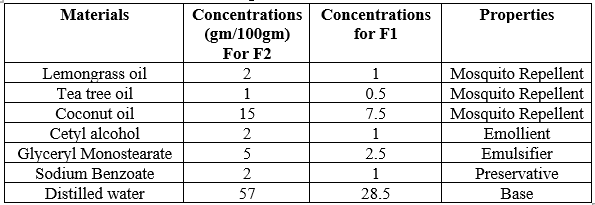
METHOD
Preparation of oil phase:
Coconut oil, Olive oil, Cetyl alcohol, Petrolleum jelly and Glyceryl monostearate were weighed accurately and taken in a beaker. The oils were then gently heated using water bath with continious stirring which allow the oils to incorporate in each other. Say it as beaker-A.
Preparation of water phase:
Distilled water, Sodium Benzoate, Lemongrass oil and Tea tree oil were weighed accurately and taken in a beaker. The components were then heated gently using a water bath with continious stirring which allows the components to incorporate in each other. Say it as beaker-B.
Combine Oil and Water Phases:
The melted oil phase (from beaker-A) and melted
water phase (from beaker-B) were poured simultaneously into a hot mortar while continious stirring to create a consistent lotion. The lotion so formed was then cool to room temperature and stored in a suitable container.
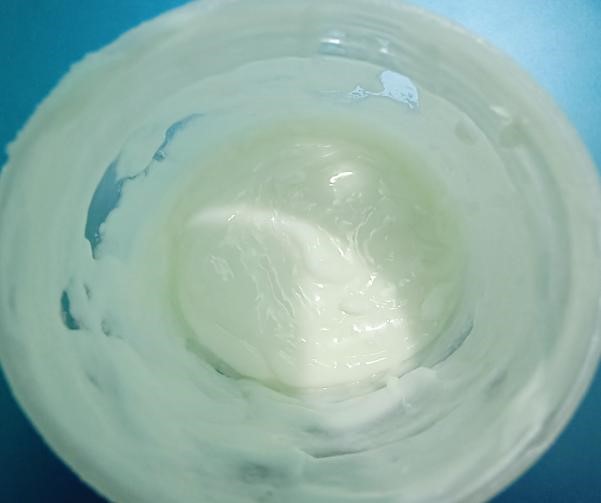
Fig 4. Mosquito repellent lotion(F2).
EVALUATION OF LOTION
VISCOSITY MEASUREMENT
The viscosity of the prepared lotion was measured using Brookfield Viscometer. The prepared lotion was placed in a clean and dry container.The lotion was then thoroughly mixed to ensure its uniform consistency.Appropriate spindle was attached to the viscometer and then the lotion sample was poured into the sample container. Viscometer was started and recordings were noted.
Observation:
The formulation F1 was less viscous as compared to that of formulation F2.
Result:
The viscosity of the formulation F1 was near 35000cP and that of F2 was about 60800 cP.
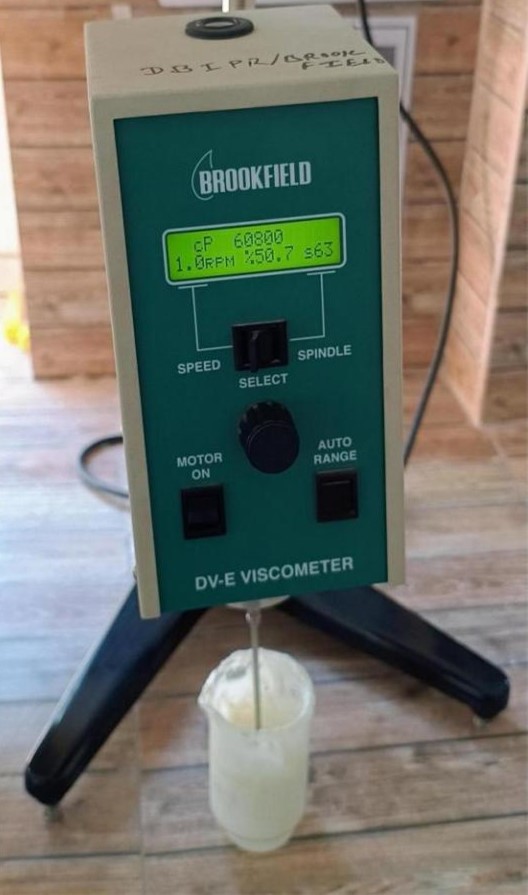
Fig 5. Brookfield viscometer (F2)
SPREADABILITY TEST
The spreadability test for a lotion is like a check to see how easily and evenly the lotion can be spread on your skin. Approax 1gm of the lotion was weighed and spread on a glass plate using spatula. The glass plate was then kept for dry.A sandwitch was created using another glass plate. After one minute,the diameter of the spread lotion was measured using ruler or calipers.Now, the spreadability was calculated using the following formula:
Spreadability=Diameter of spread in mm×100/Time taken in seconds×Weight of lotion in grams.
Observation:
The spreadability of formulation F1 was less as compared to that of formulation F2.
Result:
The spreadability of the formulation F1 lotion was found to be of approax 6.4 g.cm/s while that of F2 was about 7.2g.cm/s
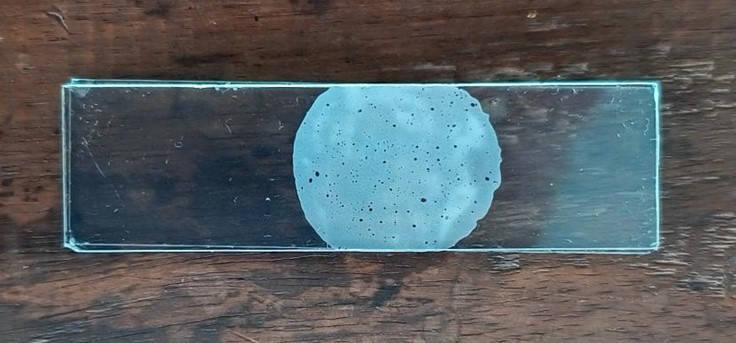
Fig 6. Spreadability test
PH Test:
The PH of the prepared lotion was measured using PH meter .
Observation:
The PH of the formulation F1 was about neutral while that of formulation F2 was slightly acidic.
Result:
The PH of formulation F1 was near 7.0 where as that of formulation F2 was near 6.1.
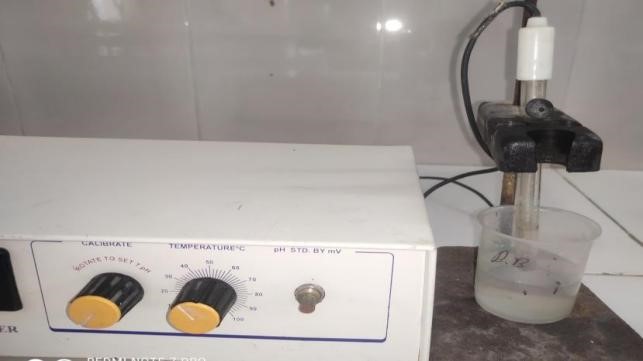
Fig 7. PH test
Skin Irritation test:
A small area of skin was chosen and the lotion was applied on it . After 24 to 28 hours, the test area of skin was then examined for any signs of irritation.
Observation:
No skin irritation was observed by any of the formulations F1and F2.
Result:
Not any sign of irritation was seen by any of the formulation F1 and F2
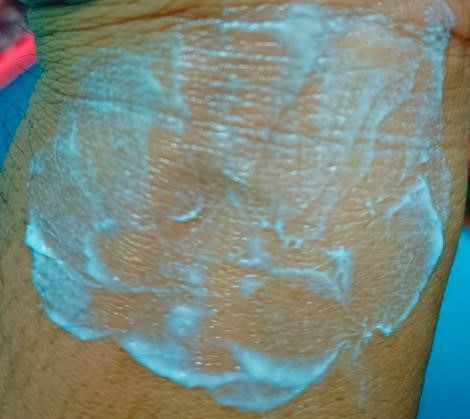
Fig 8. Skin irritation test
RESULT AND DISCUSION
Two different formulation table were developed with varying concentrations of excipients to achieve optimal outcomes.The chief ingrediants as well as excipients of my lotion were taken in balanced amount to achieve optimal outcome. Uniform lotion viscosity was maintained by using “homogenizer”, proper mixing, gentle heating, maintaining suitable temperature, suitable pressure. The formulation met the appropriate PH,viscosity and spreadability parameters which made it suitable and non-irritant as mentioned above. The PH of formulation F1 was found to be near 7.0 where as that of formulation F2 was about 6.1. The PH was determined using the instrument PH meter. The viscosity of both the formulations were measured using Brookfield viscometer. The viscosity of formulation F1 was found to be near 35000cP while that of formulation F2 was 60800cP. The spreadability test was conducted for both the formulations . The spreadability of formulation F1 was less than that of F2.None of the formulations were found to be skin irritant during the evaluation.The evaluation parameters are outlined in table no.3. Among all parameters, the formulation F2 emerged as the most favourable for a comprehensive evaluation.
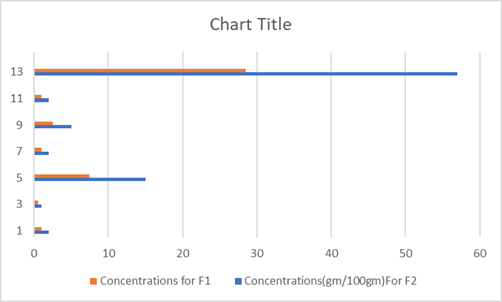

Table no.2 evaluation table of mosquito repellent lotion.
REFERENCES
- Ranasinghe, M. S. N., Arambewela, L., & Samarasinghe, S. (2016). Development of herbal mosquito repellent formulations. Int J Pharm Sci Res, 7(9), 3643-48.
- Talapko, J., Škrlec, I., Alebi?, T., Juki?, M., & V?ev, A. (2019). Malaria: the past and the present. Microorganisms, 7(6), 179.
- Ojewumi, M. E., Adeyemi, A. O., & Ojewumi, E. O. (2018). Oil extract from local leaves-an alternative to synthetic mosquito repellants. Pharmacophore, 9(2), 1-6.
- Okumu, F. O., Titus, E., Mbeyela, E., Killeen, G. F., & Moore, S. J. (2009). Limitation of using synthetic human odours to test mosquito repellents. Malaria journal, 8, 1-7.
- Gul, S., Ibrahim, S., Wasif, N., Zafar, A., & Syed, R. (2013). Mosquito repellents: killing mosquitoes or yourselves. Journal of Scientific and Innovative Research, 2(6), 1052-1057.
- Pohlit, A. M., Lopes, N. P., Gama, R. A., Tadei, W. P., & de Andrade Neto, V. F. (2011). Patent literature on mosquito repellent inventions which contain plant essential oils–a review. Planta medica, 77(06), 598-617.
- Moore, S. J., Lenglet, A., & Hill, N. (2006). Plant-based insect repellents. Insect repellents: principles methods, and use.
- Moore, S. J., & Debboun, M. (2007). History of insect repellents. Insect repellents: principles, methods and uses, 3-29.
- Di Lorenzo, M. L., & Longo, A. (2019). N, N-Diethyl-3-methylbenzamide (DEET): A mosquito repellent as functional plasticizer for poly (l-lactic acid). Thermochimica acta, 677, 180-185.
- Oladeji, O. S., Adelowo, F. E., Ayodele, D. T., & Odelade, K. A. (2019). Phytochemistry and pharmacological activities of Cymbopogon citratus: A review. Scientific African, 6, e00137.
- Deshmukh, S. K., Kolet, M. J., & Verekar, S. A. (2010). Distribution of endophytic fungi in lemon grass (Cymbopogon citratus (DC.) Stapf.). Journal of Cell and Tissue Research, 10(2), 2263.
- Ewansiha, J. U., Garba, S. A., Mawak, J. D., & Oyewole, O. A. (2012). Antimicrobial activity of Cymbopogon citratus (Lemon grass) and it's phytochemical properties.
- Han, X., & Parker, T. L. (2017). Lemongrass (Cymbopogon flexuosus) essential oil demonstrated anti-inflammatory effect in pre-inflamed human dermal fibroblasts. Biochimie open, 4, 107-111.
- Silva, C. D. B. D., Guterres, S. S., Weisheimer, V., & Schapoval, E. E. (2008). Antifungal activity of the lemongrass oil and citral against Candida spp. Brazilian Journal of Infectious Diseases, 12, 63-66.
- Nambiar, V. S., & Matela, H. (2012). Potential functions of lemon grass (Cymbopogon citratus) in health and disease. International Journal of Pharmaceutical and Biological Archives, 3(5), 1035-1043.
- Gawali, A. S., & Meshram, N. A. (2019). Scientifically cultivation of lemon grass-a potential aromatic crop. Plant Archives (09725210), 19(2).
- Gao, S., Liu, G., Li, J., Chen, J., Li, L., Li, Z., ... & Zhang, S. (2020). Antimicrobial activity of lemongrass essential oil (Cymbopogon flexuosus) and its active component citral against dual-species biofilms of Staphylococcus aureus and Candida species. Frontiers in Cellular and Infection Microbiology, 10, 603858.
- Kiani, H. S., Ali, A., Zahra, S., Hassan, Z. U., Kubra, K. T., Azam, M., & Zahid, H. F. (2022). Phytochemical composition and pharmacological potential of lemongrass (cymbopogon) and impact on gut microbiota. AppliedChem, 2(4), 229-246.
- Sharma, S., Habib, S., Sahu, D., & Gupta, J. (2021). Chemical properties and therapeutic potential of citral, a monoterpene isolated from lemongrass. Medicinal Chemistry, 17(1), 2-12.
- Mukarram, M., Choudhary, S., Khan, M. A., Poltronieri, P., Khan, M. M. A., Ali, J., ... & Shahid, M. (2021). Lemongrass essential oil components with antimicrobial and anticancer activities. Antioxidants, 11(1), 20.
- Godwin, A., Daniel, G. A., Shadrack, D., Elom, S. A., Afua, N., Ab, K., ... & Wisdom, A. (2014). Determination of elemental, phenolic, antioxidant and flavonoid properties of Lemon grass (Cymbopogon citratus Stapf). International Food Research Journal, 21(5).
- Ragasa, C. Y., Ha, H. K., Hasika, M., Maridable, J. B., Gaspillo, P. A. D., & Rideout, J. A. (2008). Antimicrobial and cytotoxic terpenoids from Cymbopogon citratus Stapf. Philipp Sci, 45, 111-22.
- Gaba, J., Bhardwaj, G., & Sharma, A. (2020). Lemongrass. Antioxidants in Vegetables and Nuts-Properties and Health Benefits, 75-103.
- Ganjewala, D., & Luthra, R. (2009). Geranyl acetate esterase controls and regulates the level of geraniol in lemongrass (Cymbopogon flexuosus Nees ex Steud.) mutant cv. GRL-1 leaves. Zeitschrift für Naturforschung C, 64(3-4), 251-259.
- Toungos, M. D. (2019). Lemongrass (Cymbopogon, L. Spreng) valuable grass but underutilized in Northern Nigeria. International Journal of Innovative Food, Nutrition and Sustainable Agriculture, 7(2), 6-14.
- Ranasinghe, M. S. N., Arambewela, L., & Samarasinghe, S. (2016). Development of herbal mosquito repellent formulations. Int J Pharm Sci Res, 7(9), 3643-48.
- Talapko, J., Škrlec, I., Alebi?, T., Juki?, M., & V?ev, A. (2019). Malaria: the past and the present. Microorganisms, 7(6), 179.
- Ojewumi, M. E., Adeyemi, A. O., & Ojewumi, E. O. (2018). Oil extract from local leaves-an alternative to synthetic mosquito repellants. Pharmacophore, 9(2), 1-6.
- Okumu, F. O., Titus, E., Mbeyela, E., Killeen, G. F., & Moore, S. J. (2009). Limitation of using synthetic human odours to test mosquito repellents. Malaria journal, 8, 1-7.
- Gul, S., Ibrahim, S., Wasif, N., Zafar, A., & Syed, R. (2013). Mosquito repellents: killing mosquitoes or yourselves. Journal of Scientific and Innovative Research, 2(6), 1052-1057.
- Pohlit, A. M., Lopes, N. P., Gama, R. A., Tadei, W. P., & de Andrade Neto, V. F. (2011). Patent literature on mosquito repellent inventions which contain plant essential oils–a review. Planta medica, 77(06), 598-617.
- Moore, S. J., Lenglet, A., & Hill, N. (2006). Plant-based insect repellents. Insect repellents: principles methods, and use.
- Moore, S. J., & Debboun, M. (2007). History of insect repellents. Insect repellents: principles, methods and uses, 3-29.
- Di Lorenzo, M. L., & Longo, A. (2019). N, N-Diethyl-3-methylbenzamide (DEET): A mosquito repellent as functional plasticizer for poly (l-lactic acid). Thermochimica acta, 677, 180-185.
- Oladeji, O. S., Adelowo, F. E., Ayodele, D. T., & Odelade, K. A. (2019). Phytochemistry and pharmacological activities of Cymbopogon citratus: A review. Scientific African, 6, e00137.
- Deshmukh, S. K., Kolet, M. J., & Verekar, S. A. (2010). Distribution of endophytic fungi in lemon grass (Cymbopogon citratus (DC.) Stapf.). Journal of Cell and Tissue Research, 10(2), 2263.
- Ewansiha, J. U., Garba, S. A., Mawak, J. D., & Oyewole, O. A. (2012). Antimicrobial activity of Cymbopogon citratus (Lemon grass) and it's phytochemical properties.
- Han, X., & Parker, T. L. (2017). Lemongrass (Cymbopogon flexuosus) essential oil demonstrated anti-inflammatory effect in pre-inflamed human dermal fibroblasts. Biochimie open, 4, 107-111.
- Silva, C. D. B. D., Guterres, S. S., Weisheimer, V., & Schapoval, E. E. (2008). Antifungal activity of the lemongrass oil and citral against Candida spp. Brazilian Journal of Infectious Diseases, 12, 63-66.
- Nambiar, V. S., & Matela, H. (2012). Potential functions of lemon grass (Cymbopogon citratus) in health and disease. International Journal of Pharmaceutical and Biological Archives, 3(5), 1035-1043.
- Gawali, A. S., & Meshram, N. A. (2019). Scientifically cultivation of lemon grass-a potential aromatic crop. Plant Archives (09725210), 19(2).
- Gao, S., Liu, G., Li, J., Chen, J., Li, L., Li, Z., ... & Zhang, S. (2020). Antimicrobial activity of lemongrass essential oil (Cymbopogon flexuosus) and its active component citral against dual-species biofilms of Staphylococcus aureus and Candida species. Frontiers in Cellular and Infection Microbiology, 10, 603858.
- Kiani, H. S., Ali, A., Zahra, S., Hassan, Z. U., Kubra, K. T., Azam, M., & Zahid, H. F. (2022). Phytochemical composition and pharmacological potential of lemongrass (cymbopogon) and impact on gut microbiota. AppliedChem, 2(4), 229-246.
- Sharma, S., Habib, S., Sahu, D., & Gupta, J. (2021). Chemical properties and therapeutic potential of citral, a monoterpene isolated from lemongrass. Medicinal Chemistry, 17(1), 2-12.
- Mukarram, M., Choudhary, S., Khan, M. A., Poltronieri, P., Khan, M. M. A., Ali, J., ... & Shahid, M. (2021). Lemongrass essential oil components with antimicrobial and anticancer activities. Antioxidants, 11(1), 20.
- Godwin, A., Daniel, G. A., Shadrack, D., Elom, S. A., Afua, N., Ab, K., ... & Wisdom, A. (2014). Determination of elemental, phenolic, antioxidant and flavonoid properties of Lemon grass (Cymbopogon citratus Stapf). International Food Research Journal, 21(5).
- Ragasa, C. Y., Ha, H. K., Hasika, M., Maridable, J. B., Gaspillo, P. A. D., & Rideout, J. A. (2008). Antimicrobial and cytotoxic terpenoids from Cymbopogon citratus Stapf. Philipp Sci, 45, 111-22.
- Gaba, J., Bhardwaj, G., & Sharma, A. (2020). Lemongrass. Antioxidants in Vegetables and Nuts-Properties and Health Benefits, 75-103.
- Ganjewala, D., & Luthra, R. (2009). Geranyl acetate esterase controls and regulates the level of geraniol in lemongrass (Cymbopogon flexuosus Nees ex Steud.) mutant cv. GRL-1 leaves. Zeitschrift für Naturforschung C, 64(3-4), 251-259.
- Toungos, M. D. (2019). Lemongrass (Cymbopogon, L. Spreng) valuable grass but underutilized in Northern Nigeria. International Journal of Innovative Food, Nutrition and Sustainable Agriculture, 7(2), 6-14.


 Saddam Hussain *
Saddam Hussain *
 Neelam Painuly
Neelam Painuly










 10.5281/zenodo.11621782
10.5281/zenodo.11621782